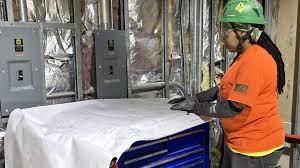
Contractors across the U.S. expect a significant boost in construction starts thanks to the One Big Beautiful Bill Act, though the rush to build could stress an already strained labor force and supply chain.

Unlike the Inflation Reduction Act, which primarily focused on clean energy, this new bill casts a broader net for the industry. “Its most transformative provisions include the restoration of 100% bonus depreciation, immediate expense of research and development costs and a permanent extension of the 20% pass-through deduction under Section 199A,” said Deniz Mustafa, senior director of infrastructure finance at the Associated General Contractors of America.
“This also improves cash flow and makes it easier for contractors to replace aging equipment,” Mustafa added. “In the construction industry, this means it is easier for companies to access equipment that is safer, cleaner and more efficient.”
The tax changes are expected to have a big impact on small and mid-sized contractors, where cash flow and tax predictability can determine the pace of hiring and equipment upgrades. “Businesses can now immediately expense capital investments through 100% bonus depreciation,” said Vance Walter, senior director of legislative affairs at Associated Builders and Contractors. “This will encourage firms to invest in new construction equipment and technologies, boosting safety, quality, productivity and economic growth.”
One major beneficiary could be the domestic manufacturing sector. “I believe this will stimulate activity and investment with construction of new high-tech manufacturing,” said John Robbins, global head of enterprise project management at Turner & Townsend. “Any newly built non-residential facility whose primary use is to manufacture, process or refine tangible goods can take the 100% deduction.”

According to Robbins, the provision covers projects breaking ground from January 2025 through December 2028 and operational by 2031. This opens the door for projects that were on hold or waiting for financing. “Projects that have been in a holding pattern or on the design boards can now be accelerated,” Robbins said.
Beyond factories, sectors like defense infrastructure, air traffic control upgrades and energy production are also poised for growth. Jeff Urbanchuk, senior vice president at the American Council of Engineering Companies, highlighted nearly $50 billion for border security construction as another driver of demand.
“America’s engineering firms are engaged across the domestic energy sector, designing systems that produce and transmit power generated from traditional, nuclear and renewable sources,” Urbanchuk said. “We do believe the Big Beautiful Bill will lead to meaningful growth.”
However, the surge could deepen some of the industry’s long-standing pain points. “The bill’s emphasis on domestic sourcing and reshoring may increase demand for U.S.-based construction labor and materials,” said Joseph Molloy, tax partner at Anchin. “[That’s] potentially intensifying workforce and supply chain pressures.”
Tax credits for energy-efficient buildings that sunset after 2026 may also create a scramble to start projects before deadlines close. “Timing and financing strategy now matter as much as project cost in maximizing the new law’s benefits,” Robbins noted.
While the bill unlocks major opportunities, firms are still looking ahead. “Our attention now goes to what Congress is planning for the reauthorization of the Infrastructure Investment and Jobs Act, which is set to expire in September 2026,” Urbanchuk said.
The One Big Beautiful Bill Act may indeed be “big and beautiful” for contractors ready to act fast — but only if they plan for the increased competition for workers and materials that comes with it.
Originally reported by Sebastian Obando in Construction Dive.